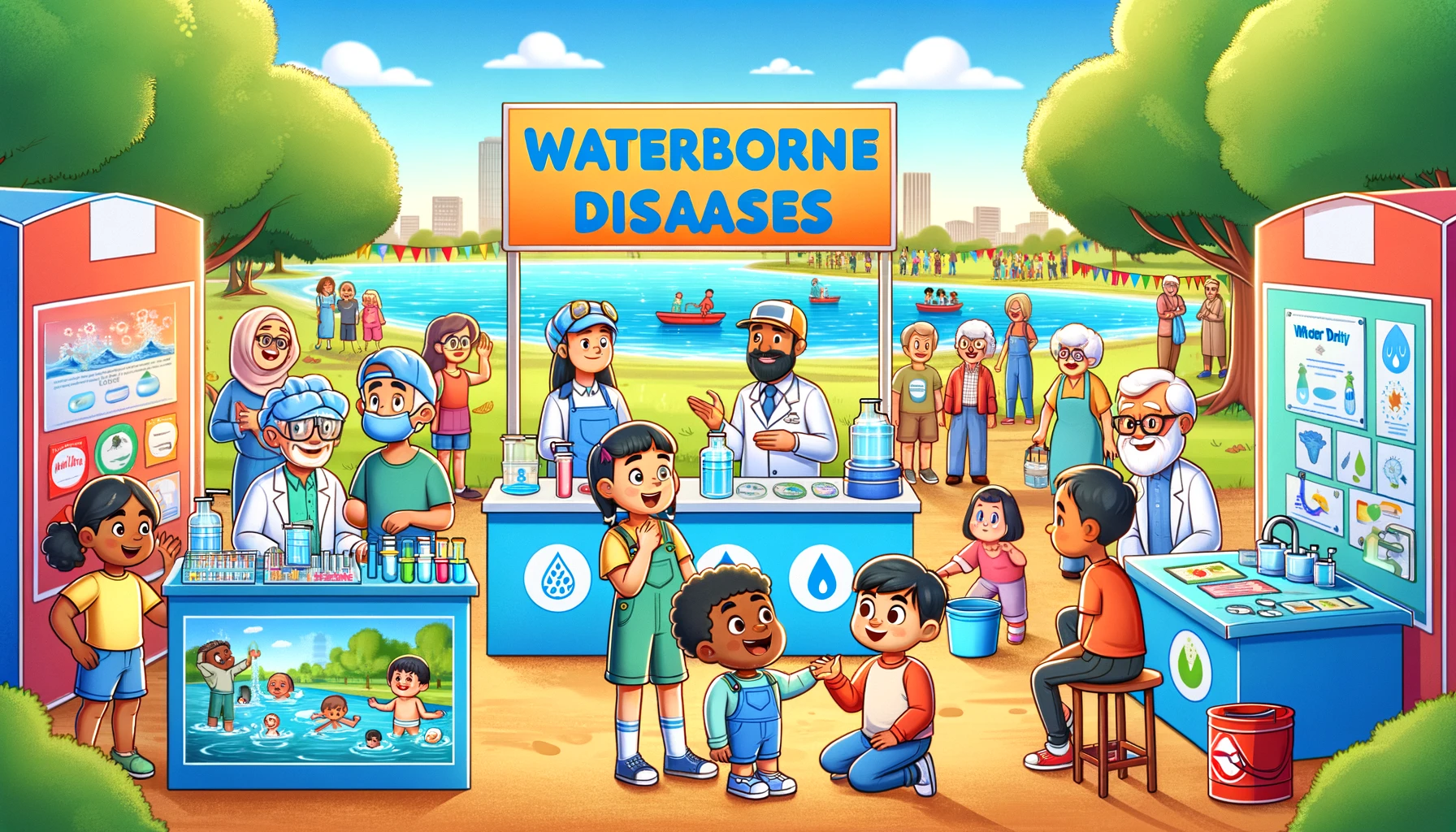Understanding Waterborne Diseases: Causes, Symptoms, and Prevention
Understanding Waterborne Diseases: Causes, Symptoms, and Prevention
Table of Contents
- Introduction to Waterborne Diseases
- Causes of Waterborne Diseases
- Common Waterborne Pathogens
- Transmission Methods
- Symptoms of Waterborne Diseases
- Diagnosis and Treatment
- Prevention Strategies
- Importance of Clean Water
- Conclusion
- References
Understanding Waterborne Diseases: Causes, Symptoms, and Prevention
Introduction to Waterborne Diseases Waterborne diseases are illnesses caused by pathogenic microorganisms that are transmitted through contaminated water. These diseases can have serious health impacts, especially in areas with inadequate water treatment and sanitation. This article explores waterborne diseases, highlighting their causes, symptoms, and prevention strategies.
Causes of Waterborne Diseases Waterborne diseases are caused by various types of pathogens that contaminate water sources:
- Bacteria: Common bacterial pathogens include Escherichia coli (E. coli), Vibrio cholerae (cholera), and Salmonella typhi (typhoid fever).
- Viruses: Viral pathogens such as norovirus, rotavirus, and hepatitis A virus can cause waterborne illnesses.
- Parasites: Parasitic organisms like Giardia lamblia, Cryptosporidium, and Entamoeba histolytica are also significant causes of waterborne diseases.
- Fungi: Certain fungi can contaminate water and lead to infections, although this is less common compared to bacterial, viral, and parasitic infections.
Common Waterborne Pathogens Here are some of the most common pathogens associated with waterborne diseases:
- Escherichia coli (E. coli): Often found in fecal contamination, some strains can cause severe gastrointestinal illness.
- Vibrio cholerae: The bacterium responsible for cholera, which causes severe diarrhea and dehydration.
- Norovirus: A highly contagious virus that leads to gastroenteritis, characterized by vomiting and diarrhea.
- Giardia lamblia: A parasite that causes giardiasis, resulting in diarrhea, stomach cramps, and nausea.
- Cryptosporidium: A parasite causing cryptosporidiosis, leading to severe diarrhea and gastrointestinal discomfort.
Transmission Methods Waterborne diseases are typically transmitted through:
- Contaminated Drinking Water: Consuming water that is contaminated with pathogens.
- Recreational Water: Swimming in contaminated pools, lakes, or rivers.
- Food Preparation: Using contaminated water to wash food or prepare meals.
- Poor Sanitation: Lack of proper sanitation facilities leading to contamination of water sources with fecal matter.
Symptoms of Waterborne Diseases Symptoms of waterborne diseases can vary depending on the pathogen but often include:
- Diarrhea: Frequent, watery bowel movements.
- Nausea and Vomiting: Feeling sick and ejecting stomach contents through the mouth.
- Stomach Cramps: Pain or discomfort in the abdominal area.
- Fever: Elevated body temperature indicating an immune response.
- Dehydration: Loss of fluids leading to symptoms like dry mouth, fatigue, and dizziness.
Diagnosis and Treatment Diagnosing waterborne diseases involves:
- Medical History and Symptoms: Discussing recent water consumption or recreational activities and identifying symptoms.
- Laboratory Tests: Analyzing stool, blood, or urine samples to identify the specific pathogen. Treatment may include:
- Hydration: Ensuring adequate fluid intake to prevent dehydration, often through oral rehydration solutions.
- Medications: Using antibiotics for bacterial infections, antivirals for viral infections, and antiphrastic drugs for parasitic infections.
- Supportive Care: Managing symptoms through rest, maintaining electrolyte balance, and addressing any complications.
Prevention Strategies Preventing waterborne diseases involves multiple strategies:
- Water Treatment: Ensuring access to clean, treated drinking water through filtration, chlorination, and other purification methods.
- Good Hygiene Practices: Regular handwashing, especially before eating or preparing food, and after using the bathroom.
- Proper Sanitation: Using adequate sanitation facilities and disposing of waste properly to prevent water contamination.
- Safe Food Practices: Washing fruits and vegetables with clean water and cooking food thoroughly.
- Awareness and Education: Educating communities about the risks and prevention of waterborne diseases.
Importance of Clean Water Access to clean water is essential for preventing waterborne diseases and promoting overall health:
- Health and Well-being: Reducing the incidence of waterborne diseases improves overall health and reduces the burden on healthcare systems.
- Economic Impact: Investing in clean water infrastructure can boost economic productivity by reducing illness-related absenteeism and healthcare costs.
- Sustainable Development: Clean water is a cornerstone of sustainable development, contributing to education, gender equality, and poverty reduction.
Conclusion Understanding how waterborne diseases are caused, transmitted, and prevented is crucial for maintaining public health. By ensuring access to clean water, practicing good hygiene, and implementing effective prevention strategies, we can reduce the incidence of these diseases and improve overall health and well-being.

<ⓒ WizardMedics (wizardmedics.com)>






